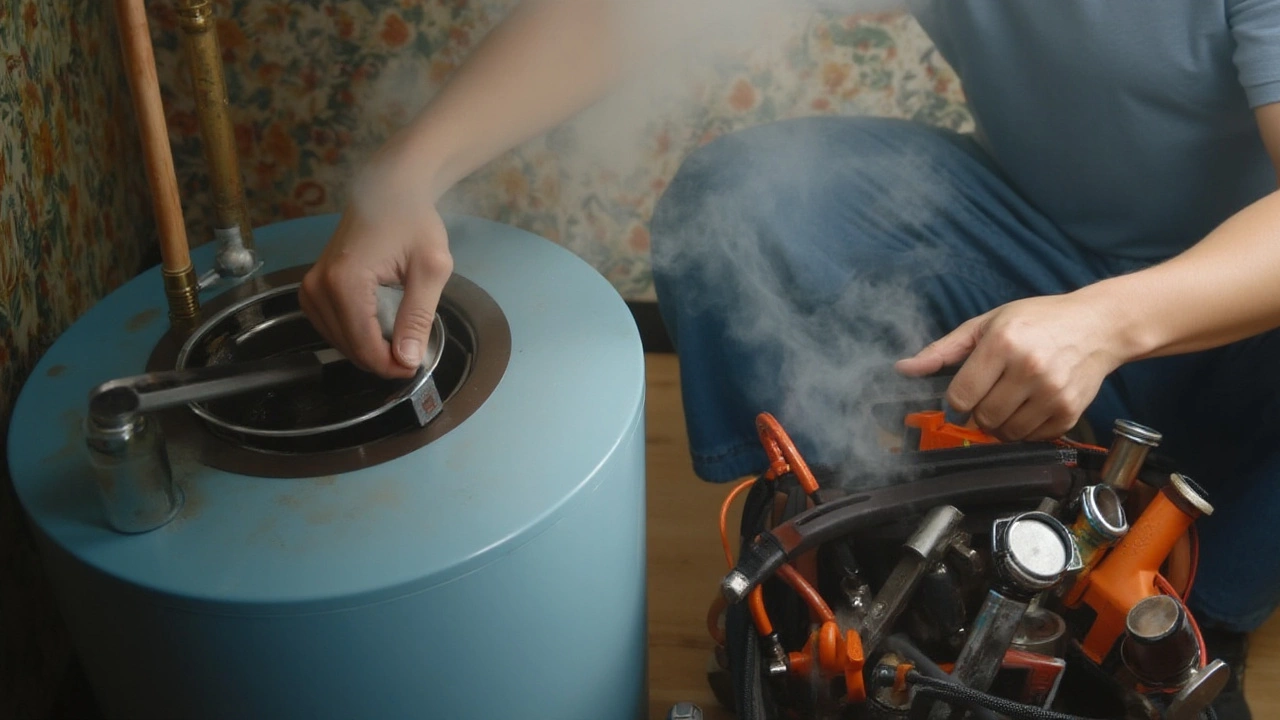How to Drain a Water Heater and Keep It Running Smoothly
If your hot water feels rusty or the tank makes strange noises, it’s probably time to drain the heater. A simple flush gets rid of sediment, improves efficiency, and can stop costly leaks. The process isn’t rocket science – you just need a garden hose, a bucket, and a few minutes.
Why Draining Matters
Over months, minerals from your water settle at the bottom of the tank. This layer, called sediment, acts like insulation. The heater works harder, which raises your electricity or gas bill. In extreme cases the sediment can over‑heat the tank’s metal, causing cracks or a burst pipe. Regular draining prevents those headaches.
Step‑by‑Step Drain Guide
1. Gather tools. You’ll need a garden hose, a bucket big enough for the first splash, and a pair of gloves. Turn off the power – flip the breaker for electric units or close the gas valve for gas models.
2. Shut off the water supply. Locate the cold‑water inlet valve on top of the tank and turn it clockwise until it stops.
3. Attach the hose. Connect one end to the drain valve (usually near the bottom) and run the other end to a floor drain or outside where the water can flow safely.
4. Open the drain valve. Let the water run. It may sputter at first; that’s the sediment loosening. If the flow slows, open the pressure‑relief valve on the top of the tank to let air in.
5. Flush the tank. After the tank empties, turn the cold‑water inlet back on for a few seconds, then shut it off. This rinses out remaining particles. Repeat once or twice until the water runs clear.
6. Close valves and restore power. Tighten the drain and pressure‑relief valves, turn the water supply back on, and wait for the tank to fill. Once full, restore electricity or gas and wait a few minutes for the heater to fire up.
That’s it – you’ve given your heater a fresh start.
If you notice any leaks while draining, hear rumbling that won’t stop, or the water still looks cloudy after several flushes, call a professional. Our Glastonbury team can diagnose hidden issues, replace a worn‑out anode rod, or suggest a replacement if the tank is near the end of its life.
To keep things running smooth, aim to drain your heater once a year. Homes with hard water may need it twice a year. Mark your calendar after the last flush so you don’t forget.
Remember, safety first. Never attempt to drain a gas heater without turning off the gas, and always let the unit cool before touching any metal parts. If you’re unsure about any step, give us a call – we’re quick, affordable, and local.
Regular maintenance saves money, reduces energy waste, and means you never get caught without a hot shower. A quick drain is a small effort for big peace of mind.

Flush vs. Drain: What's Best for Your Water Heater Maintenance?
Discover the differences between flushing and draining your water heater. This article explores which method keeps your water heater running efficiently and prolongs its lifespan. Learn the benefits of each approach, potential risks, and essential maintenance tips. Whether you're a DIY enthusiast or prefer professional help, uncover the best practices for maintaining your water heating system.